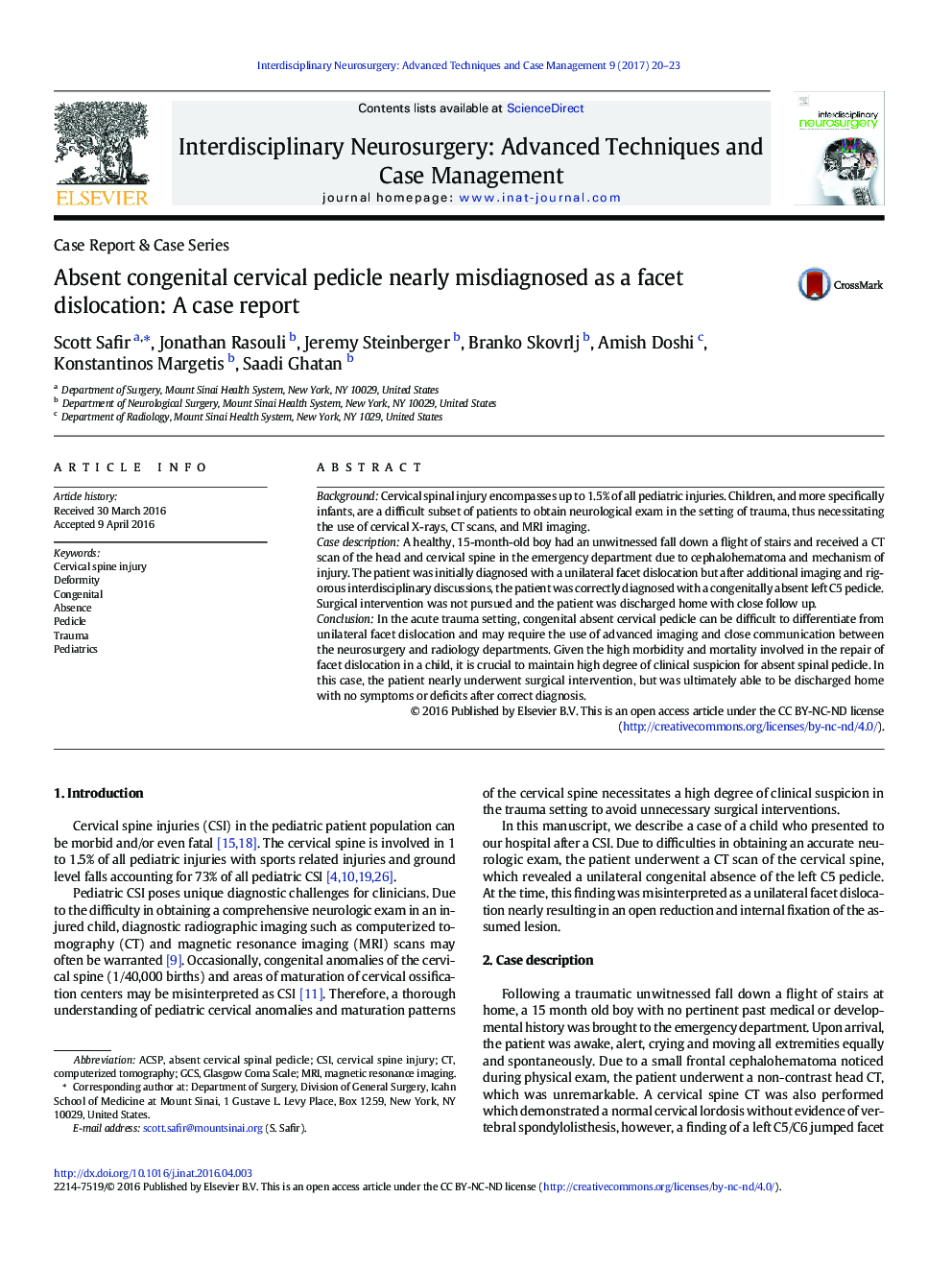| Article ID | Journal | Published Year | Pages | File Type |
|---|---|---|---|---|
| 5629429 | Interdisciplinary Neurosurgery | 2017 | 4 Pages |
BackgroundCervical spinal injury encompasses up to 1.5% of all pediatric injuries. Children, and more specifically infants, are a difficult subset of patients to obtain neurological exam in the setting of trauma, thus necessitating the use of cervical X-rays, CT scans, and MRI imaging.Case descriptionA healthy, 15-month-old boy had an unwitnessed fall down a flight of stairs and received a CT scan of the head and cervical spine in the emergency department due to cephalohematoma and mechanism of injury. The patient was initially diagnosed with a unilateral facet dislocation but after additional imaging and rigorous interdisciplinary discussions, the patient was correctly diagnosed with a congenitally absent left C5 pedicle. Surgical intervention was not pursued and the patient was discharged home with close follow up.ConclusionIn the acute trauma setting, congenital absent cervical pedicle can be difficult to differentiate from unilateral facet dislocation and may require the use of advanced imaging and close communication between the neurosurgery and radiology departments. Given the high morbidity and mortality involved in the repair of facet dislocation in a child, it is crucial to maintain high degree of clinical suspicion for absent spinal pedicle. In this case, the patient nearly underwent surgical intervention, but was ultimately able to be discharged home with no symptoms or deficits after correct diagnosis.
